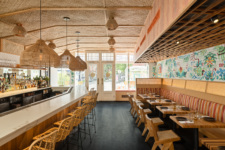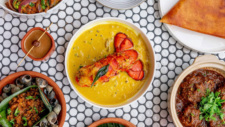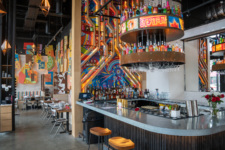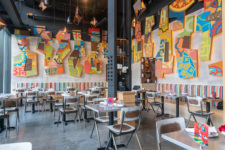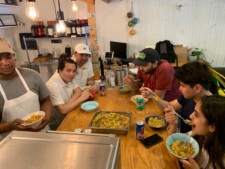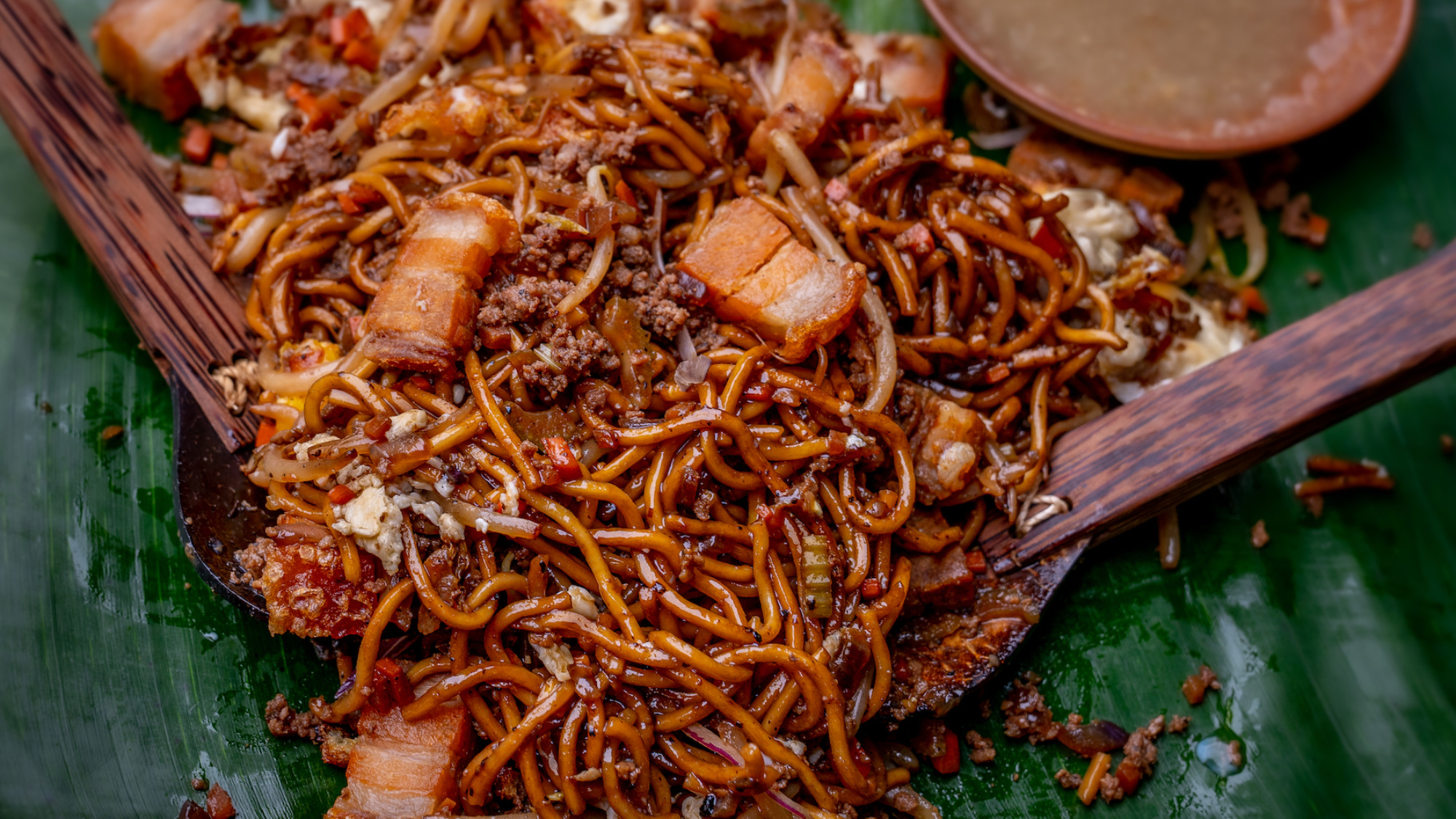
Everything You Need to Know About Naks, From the Same Team Behind Dhamaka and Semma
Ask most New Yorkers for their opinions or expertise on Filipino food and chances are — if you’re lucky — they’ll mention the same few dishes: Sisig. Halo halo. Adobo. Lumpia. Balut, if they’re adventurous.
By the time Naks officially opens in the East Village on Tuesday, Dec. 5, Manila-born-and-raised chef Eric Valdez hopes they’ll also familiarize themselves with Soup No. 5, dinakdakan, kinilaw, and pinakbet, too.
The East Village restaurant is Valdez’s first project as executive chef and partner, after having served as the chef de cuisine at the highly acclaimed Dhamaka for the past two years. With him, he’s got the backing of his bosses from Dhamaka — restaurateur Roni Mazumdar and chef Chintan Pandya — both of whom he has worked with for the past seven years, first at Rahi (which is now Semma), then Adda, and Dhamaka. Together, the trio is committed to changing people’s perceptions of Filipino food — just as they’ve done so with Indian food at Adda, Dhamaka, and Semma (with Michelin-starred chef Vijay Kumar).
Already, Naks is generating buzz as one of New York’s most anticipated new restaurant openings of the year. Here’s a primer on what you can expect there, and what you should order on your first visit.
1. Naks almost didn’t happen.
The space on 13th Street occupied by Naks was originally supposed to become the new location of Mazumdar and Pandya’s popular Long Island City restaurant, Adda. Construction on the restaurant was set to begin in just four days earlier this spring, but that was when Mazumdar called up Pandya and told him that the space should be the home of Valdez’s first restaurant.
“Maybe it had something to do with the fact that it used to be Jeepney,” Mazumdar says, referring to the groundbreaking Filipino restaurant from Nicole Ponseca, which occupied that same space for nine years before closing in 2021. “But it felt like the right spot for someone’s first restaurant.”
“It all happened so fast,” recalls Pandya. “All of us believe in destiny, and I don’t know, maybe this place was meant to be a Filipino restaurant all along.”
For Valdez, having his own Filipino restaurant in New York is something he never thought would become a reality. “If you asked me 10 or even five years back, I wouldn’t open a Filipino restaurant,” he says. “But Dhamaka opened my eyes. It showed me maybe there’s an opportunity for our own cuisine. A year into it, after I’d been talking to Roni and Chintan, I said, ‘What if we could do something like Dhamaka, but for Filipino cuisine?”
Just as Pandya showcases the different regional cuisines of India over at Dhamaka, Valdez hopes to do the same for the regional cuisines of the Philippines over at Naks. “I’m just elevating it a little bit,” he says. “We’ll still do the same flavors and ingredients, but the experience will be different.”
The name for the restaurant, Naks, is a Manila-based slang term or expression of surprise or admiration. “It’s like ‘cool,’” says Pandya. “If you ask Filipino people from the Philippines what the name of the restaurant is, they will probably laugh,” Valdez says.
2. The menu was largely inspired by a trip to the Philippines.
In June, all three traveled together throughout the Philippines to get inspiration for the new restaurant. Starting in Manila, they made their way to Illocos Norte, Pampanga, Cebu, Davao, and the streets of Manila, with the intention of trying as many different dishes and regional cuisines as possible in a little over a week.
“The north is different from the south; the food is different in their own ways,” says Valdez. “In the north, they use a lot of meats like goat and lamb, and in the south, they are very heavy on seafood.”
Mazumdar recalls two meals, in particular, that left an impact. The first took place at Valdez’s uncle’s house in Illocos Norte where they had fresh-cut beef, called kinilaw na baka, served with a side of bile and onions on top. “I didn’t know how to react to that,” says Mazumdar. “But funny enough, as you start to mix it, that bile is doing something amazing to the meat, and there’s this tinge of bitterness to it, too.” The other was at Valdez’s mother’s house in Amadeo in the province of Cavite, where they feasted on bulalo (beef shank soup), pork humba (braised pork belly), pancit gulay (noodles with vegetables), and sizzling tadyang ng baka (crispy beef ribs).
Says Mazumdar: “We were going out to restaurants, eating at street stalls, little barbecue joints, all around town, and we showed up to his mother’s house and I thought, if we can just serve this real stuff to New Yorkers, that’s what we need to focus on. How can we do that? There’s amazing stuff within every cuisine, but are we doing a good enough job to share that?”
“The food at Naks will be the food that I grew up with, that I haven’t found in New York,” says Valdez. “Recipes from my family, from my neighbors, and also from traveling to those regions: Manila, Ilocos, Pampanga, Cebu, and Davao. I’ve been living in New York for almost nine years and especially on my days off, I always crave Filipino food. And I’ll be honest: my friends and I have been to many of the Filipino restaurants in Queens, but for us it’s not just the same. We like to go to our friends’ houses, or we cook it ourselves, because the Filipino food scene here is very different compared to what we have back home. The variety and quality of ingredients is very different.”


3. Naks is almost like two restaurants in one, so it’ll probably warrant more than one visit.
Naks is designed in such a way that there’s a front section where diners can order from an à la carte menu, and a back section where they can have a full-on kamayan feast, priced at $135 per person, not including tax and gratuity. Pre-paid reservations are accepted solely for the kamayan dining experience; diners are encouraged to walk in for the à la carte menu. [Editor’s Note: As of Jan. 9, Naks has begun taking reservations for à la carte dining.] There are two seatings for the kamayan experience each night at 5:30 and 8:30 p.m.
There are a total of 38 seats, with 20 seats in the back reserved specifically for the kamayan, a Filipino style of dining that involves a spread of dishes served on banana leaves where diners are encouraged to eat with their hands. There’s also a bar that has four seats. Fourteen seats in the front are reserved for à la carte dining.
“The kamayan will be more like a sit-down tasting menu,” says Pandya, “and will be pre-booked.” It consists of 18 dishes: a first bite of sea urchin, followed by kinilaw (Filipino-style ceviche), a soup course featuring beef-blood soup, appetizers (scallops, chicken skin, and egg noodles among them), mains (vegetable stew and lemongrass-accented lechon), vegetables and rice, and finally dessert.
The à la carte menu, on the other hand, has up to 10 different types of dishes, largely inspired by Filipino street food, including skewers and claypot entrées.
The interior was designed by Wid Chapman, the same firm that designed the group’s other restaurants, and Valdez describes the décor as rustic, with lots of rusted metals and wood used throughout. “It had to have the feel of the streets of Manila,” Valdez says. The first thing most diners will notice when they enter is a large abstract mural, painted by Sean Maze under the direction of Filipino artist Patrick Ondevilla.
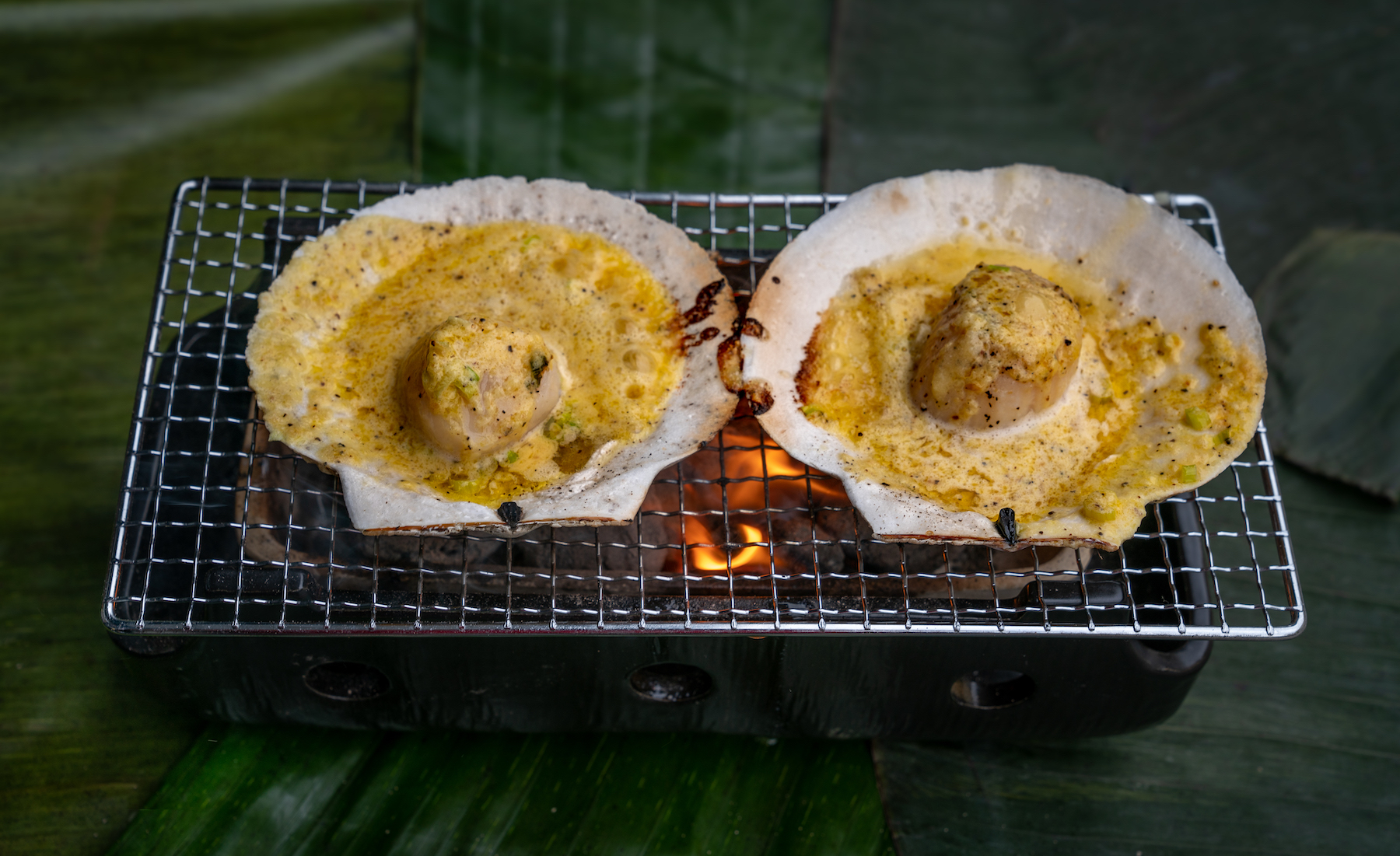
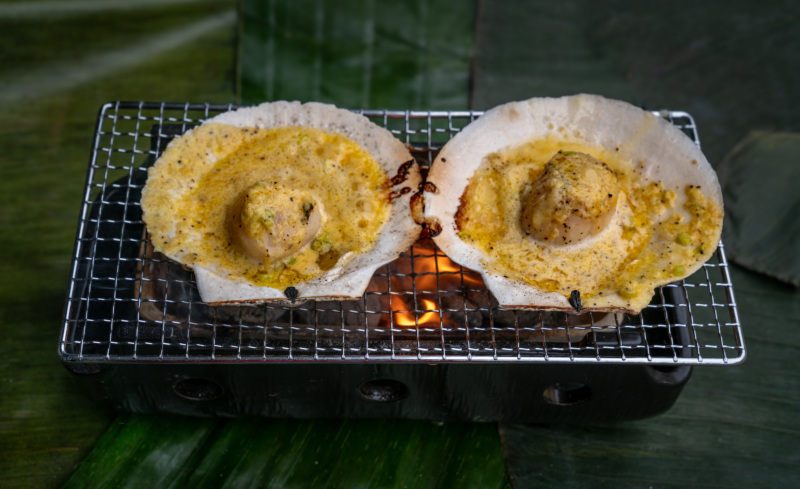
4. Be sure to order some cocktails, too.
The cocktail program at Naks will feature many ingredients and liquors sourced directly from the Philippines, like Filipinas Especial spiced rum, Ginebra S. Miguel gin, Emperador red rum, and Archipelago gin, and was designed by Aaron Asombrado, one of Valdez’s good friends who also grew up in the Philippines and who was a head bartender at Dhamaka. Expect to see drinks featuring smoked, burnt citrus (Para Sa Paborito Kong Apo), a welcome drink for the kamayan inspired by balut (it has coconut vinegar, duck jus, and grated Filipino salt), and another that incorporates miso (Parusang Hapon), a reference to Japan’s influence on the Philippines as well.
“I think that’s the magic of the Philippines,” says Mazumdar. “You’re getting a taste of all these elements [that] are so distinctly different, yet they’re combined together to create one cohesive culture.”
There are also two zero-proof cocktail options, one made with molasses and coconut water (Sago Gulaman) and another with sea buckthorn, silken tofu soya milk emulsion, and tapioca pearls (Taho).
5. And don’t sleep on these dishes in particular.
With so many dishes to choose from, whether you opt for the à la carte or kamayan experience, it can be a bit overwhelming, so we asked Valdez to highlight a few dishes from both menus in particular. Here’s what he had to say about each one, in his own words.


Soup No.5 | À La Carte
Beef testicles and penis and Sibot spice ($19)
I grew up eating this dish. It’s like a hangover soup that helps cure hangovers after a late night of drinking. The Sibot spice reflects the Chinese influence in Filipino cooking; you’ve got four different Chinese herbs — Chinese foxgloves, angelica, peony alba, and goji berries.
In every region, they call it something different. In the south, they call it RM soup, short for “remember me” because that’s the name of the restaurant that made the dish famous. In other parts of the country, it’s called lanchiao. In Manila, they call it Soup No. 5 because in one restaurant, they serve all different kinds of soups and this one is the fifth one. My friends and I could never find this kind of soup out here in New York, so I thought that maybe if I serve it, people will be excited about it.
Sourcing the ingredients for this dish has been a challenge, but we’re working with a butcher shop out in Forest Hills, Queens, that’s saving those organs for us. I need to be there in the morning to source it, because they only do the butchery on the weekends. I asked one of my Chinese friends to help me find the spices back in the Philippines.

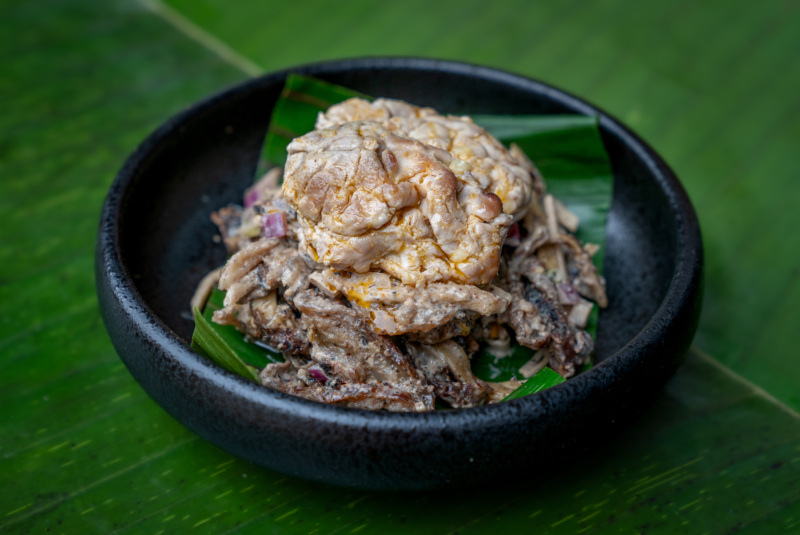
Dinakdakan | À La Carte
Pork liver, snout, ear, and brain ($19)
There’s a difference between this and sisig, which is grilled pork snout and ears and it’s all grilled. With this dish, we’re also going to use pork brains like a binder. What they usually do with sisig is mix mayonnaise with it. Growing up, we had this festival where I could always watch a butcher making this dish, and I just remember it so vividly. The other thing that really makes this dish is the fact that we’re using sugar cane vinegar, instead of regular vinegar, so the flavors are very pungent. This is usually served as an appetizer in Illocos de Norte, a region in the North.
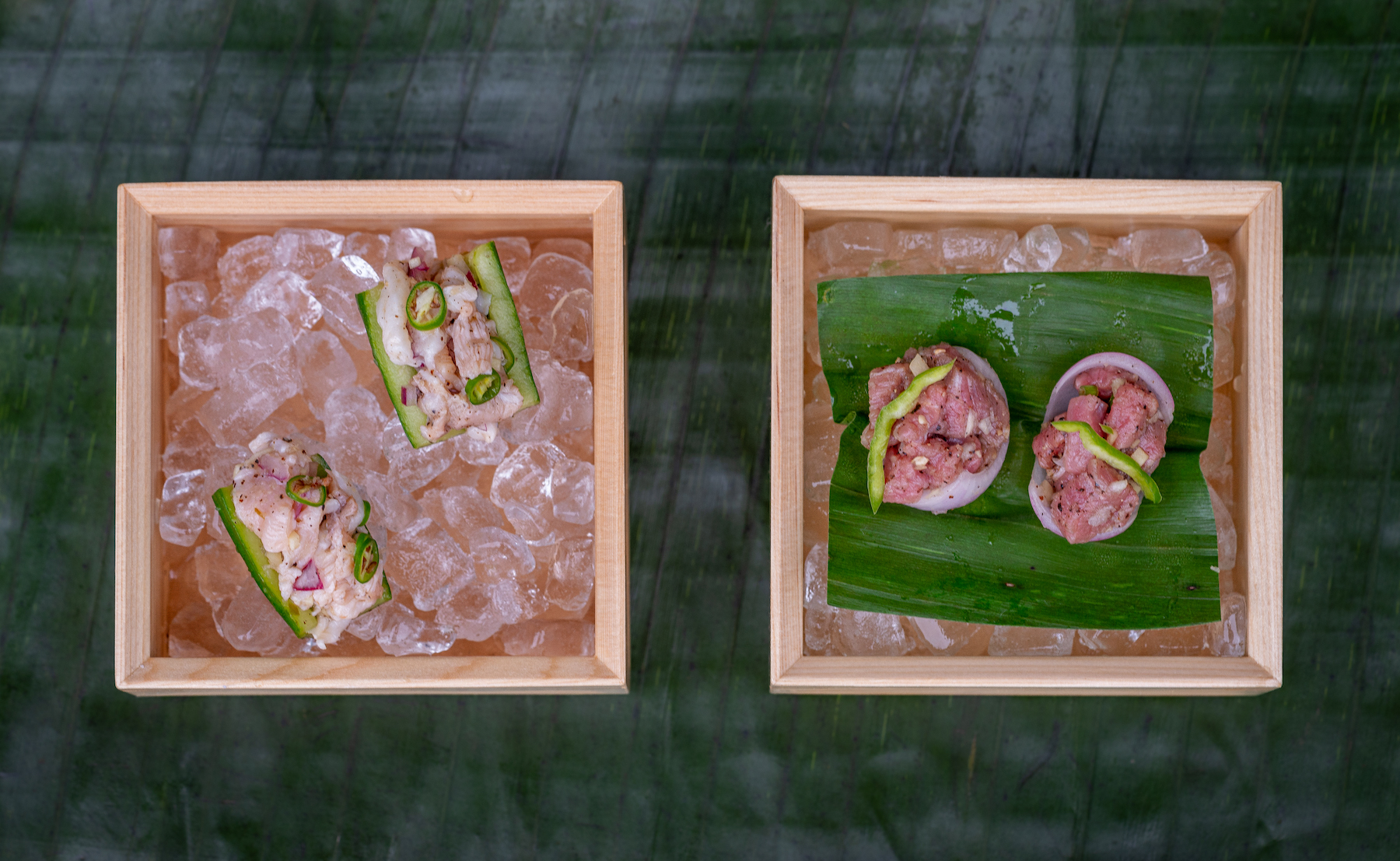
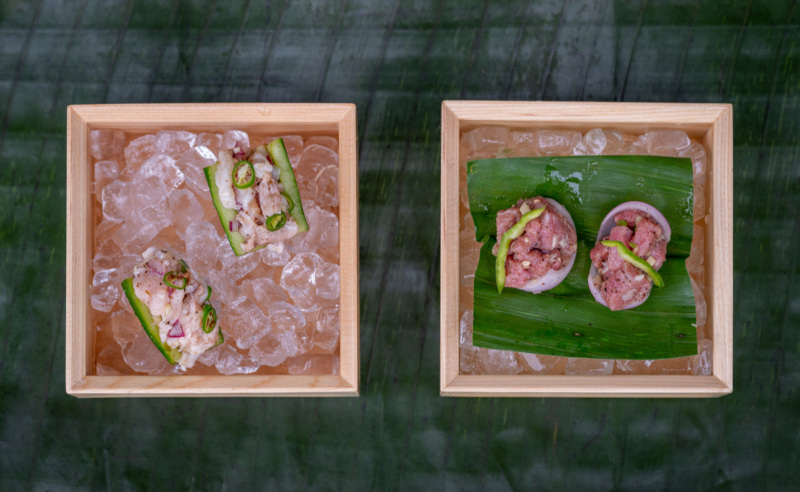
Kinilaw Na Bat | Kamayan
Sea cucumber, coconut vinegar, and cucumber
This is a ceviche dish made with sea cucumber, and the first time I ever ate raw sea cucumber was during my recent trip to the Philippines with Roni and chef [Chintan] a couple months ago. We went to Cebu in the South, and we went to this small mom-and-pop shop near the ocean that serves a variety of seafood dishes. I love kinilaw, and this was a standout. They clean the fresh sea cucumber and chop it into very small bite-size pieces and mix it with coconut vinegar, calamansi, red onion, ginger, and chile. The flavors are different. The vinegar they use over there, they made it on their own. They have their own spice blend. They mix vinegar with lots of different herbs and spices, and the result is a ceviche that is kind of chewy but also very interesting.
I can get fresh sea cucumber over here, but the only thing is that here there are only two varieties of sea cucumber that are readily available; the Maine one is very chewy and kind of red, and the Bay Area one is white in color and has a similar taste to what we have back home. I’m planning to use the one from the Bay Area. All the sauces that we’re going to use at Naks will be our own spice blends. Filipino cuisine is very heavy on vinegar, soy sauce, and a lot of fermented fish sauce. I’m serving this kinilaw inside cucumber cups that are also marinated in some vinegar.

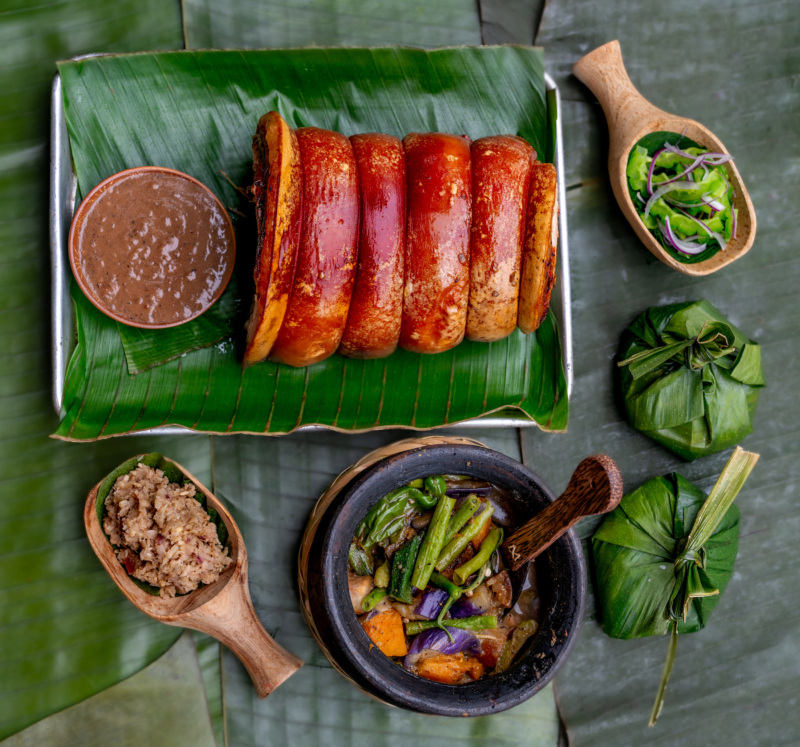
Pinakbet Ilokano | Kamayan
Market vegetables, bagnet (deep-fried pork belly), fermented fish sauce
It’s my mom’s favorite dish, and I grew up eating it, too. It’s what I always request from her when I go home. There are two varieties; the kind you see all over New York and in the Philippines is the one with shrimp paste, which is kind of dry, but my mom’s version has fermented fish sauce, so it’s a little more soupy, and has a very strong fishy aroma.
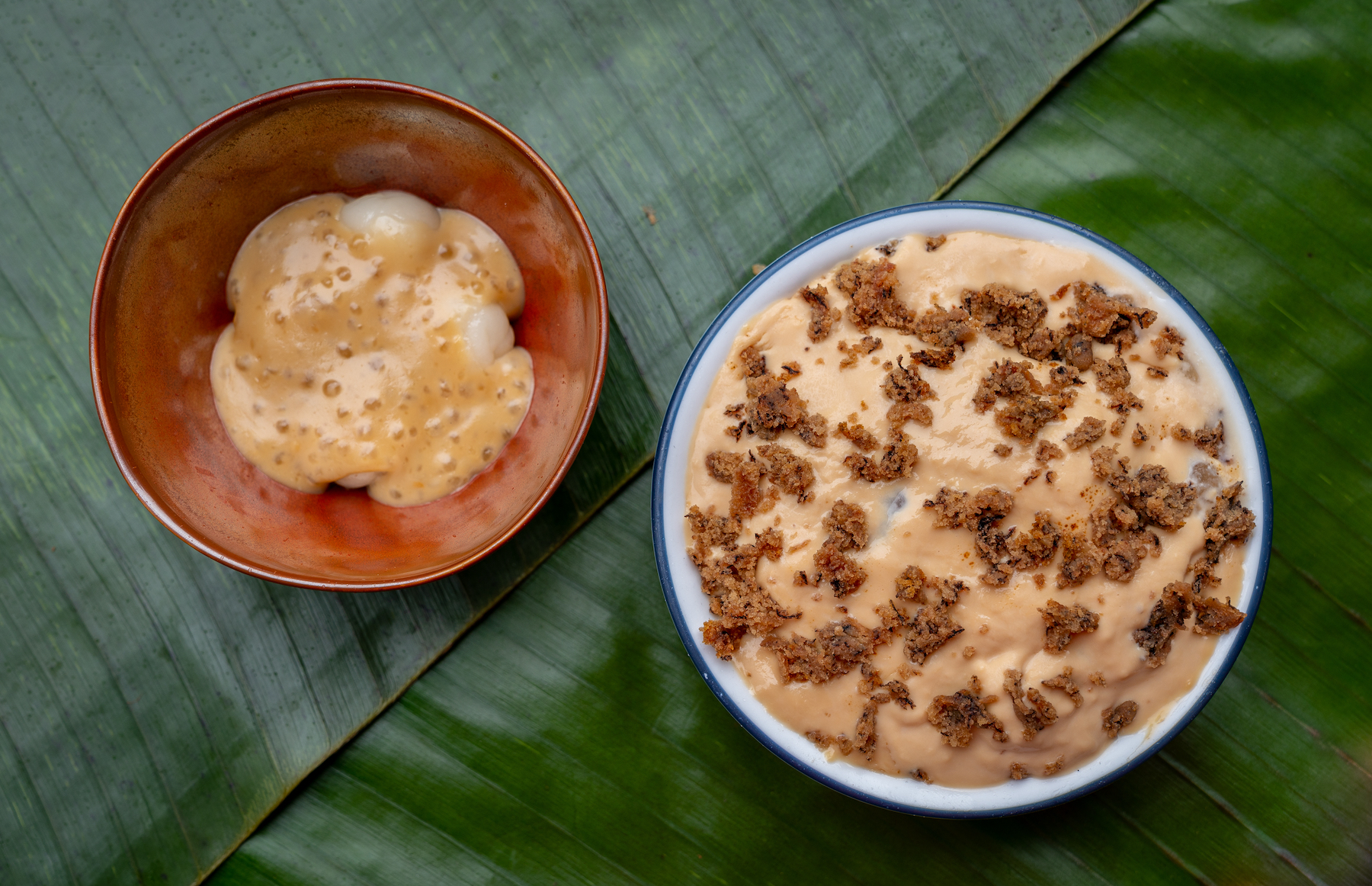
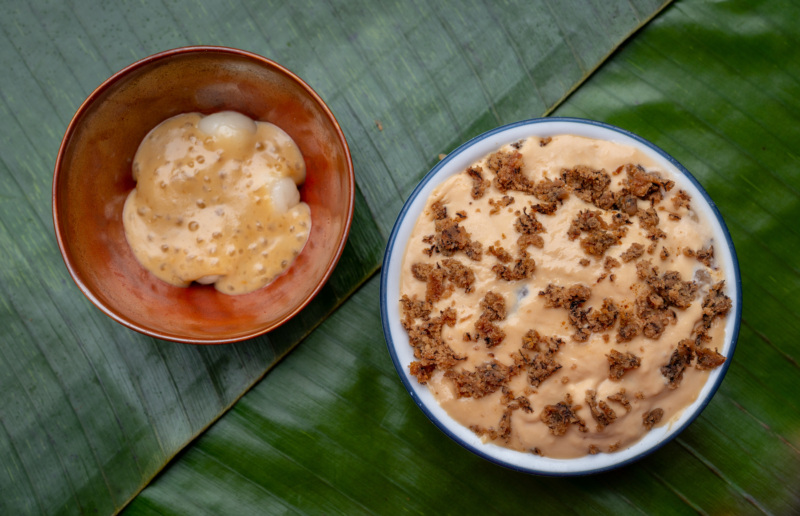
Saba Con Yelo | Kamayan
Divina’s banana cake, saba (local variety of banana in the Philippines), and vanilla
Our bananas back home are like a cross between a plantain and a sweet banana. We cook the banana with molasses and brown sugar and a little vanilla, and cook it until it’s very mushy. For this dish, I’m adding my mom’s banana cakes; she’s a good cook and one of her specialties is her banana cake. I’m going to mix that with shaved ice that’s made with reduced cow’s milk. It’s like a shaved ice dessert with banana cake and mashed banana pudding.
6. Come to Naks with an open mind …
And know that you’ll likely leave with a very full stomach, and a new understanding and appreciation for Filipino food, no matter how familiar you may (or may not) be with Filipino food and culture.
“I think, sometimes, us Filipinos are scared of our own cuisine,” says Valdez. “We try to put different stuff on our food to make it more approachable to other people, but that’s not going to be my approach at Naks. I want to give people a taste of what these dishes are back home, and I hope people realize that Filipino food is more than just adobo.”
Naks is open from 5 to 11 p.m. Tuesdays through Sundays.
Deanna Ting is Resy’s New York Editor. Follow her on Instagram and X (formerly Twitter). Follow Resy, too.
Discover More

Stephen Satterfield's Corner Table






